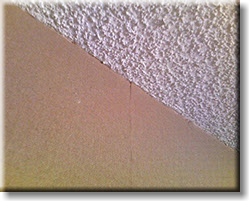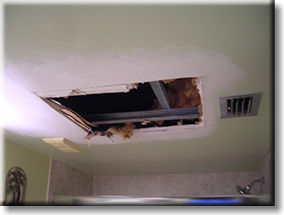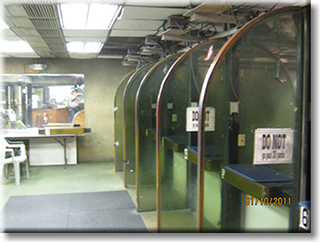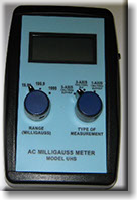Projects: Indoor Air Quality


Project: Asbestos Containing Materials (ACM) Survey
Scope of Work: Indoor Air Quality
Overview:
Rob Wallace was licensed in Florida as a Licensed Asbestos Consultant (LAC) in the first wave of licensing in Florida in 1989. His personal license number is EA0000024, indicating he was one of the first in Florida to achieve this distinction. Since 1989, Mr. Wallace has performed hundreds of Asbestos Surveys on myriads of buildings and structures such as: residences, commercial buildings, high rise condominiums, mobile homes, warehouses, medical offices, general professional offices, industrial buildings and equipment, convention centers, and miscellaneous structures. These projects have been undertaken on behalf of the Postal Service, Coast Guard, and other Federal Agencies, State Agencies, City and County Governments, property owners, contractors and industrial companies. The most recent asbestos surveys were for residences for demolition by the City of Tampa in Sulpher Springs, fire damaged commercial buildings for renovations, apartment complex with popcorn ceilings, warehouse demolition, interior rebuild of commercial retail space, industrial O&M periodic re-inspection, and restaurant interior renovation.


Project: Various Homes and Buildings
Scope of Work: Chinese Drywall Investigations
Overview:
EEC has worked on Chinese Drywall Projects where we performed air clearance sampling on homes that were known to have previously contained Chinese Drywall. The new owner of the home is typically an investor or contractor who has purchased the home from a bank at a significantly discounted price and plans to remove the affected drywall, install new drywall and turn around and sell the home. However, there are two major issues that must be dealt with. First is the inspection of the ceiling for the presence of Chinese Drywall. Ceilings are typically constructed of 5/8”drywall, and most CDW is ½’’. Some think ceilings need not be inspected; however this is not the case, as we have seen ½ inch Chinese drywall in several ceilings. This is likely because often times the installers will use the first available piece of drywall available when the 5/8” board is not readily available. The second issue is the drywall dust remaining in the home after the contaminated drywall has been removed. Since this dust is just as harmful as the drywall itself, we recommend that this dust must be removed completely before the testing begins with an industrial vacuum with a HEPA rated filter. EEC has helped many investors and homeowners gain peace of mind from Chinese Drywall.


Project: Senior Medical Care Center
Scope of Work: Indoor Air Quality Testing
Overview:
The testing was requested by the owner of a Senior Care Facility due to specific rooms having spots on the walls which was suspected to be mold. EEC performed an initial walk through inspection of the facility, and proposed a follow up inspection and testing plan based on the original walk through. The scope of work included the use of a moisture meter, infra-red camera inspection, measuring the comfort parameters (temperature, relative humidity and carbon dioxide levels) and performing non-viable fungal spore testing of the air and swab samples of suspect hard surfaces for fungal spores. In some rooms it appeared the possible water source for the air quality problems was the shower stall overflowing to the floor, to the adjacent baseboard and then around the corner to the backside of the shower wall. This was confirmed with the moisture meter and also with the infra red camera as wall area was affected on the baseboard by water. There were individual thermostats in each unit. They were also equipped with humidity control settings. The relative humidity and carbon dioxide readings were erratic indicating the AC system was out of balance. The AC contractor of this two year old facility was called in to recheck the system. Once the humidity control was re-established the spots on the walls ceased.


Project: Shooting Ranges
Scope of Work: Testing for Airborne Lead
Overview:
Typically lead testing occurs at four locations in an indoor Shooting Range. Three of these specific locations are stationary and a personal air sample pump is placed on one employee who works and moves throughout the entire facility. The three stationary sample locations are usually the sales area at the cash register, the range officer’s office and one lane in the shooting range. The personal air sample pump is placed on the range officer or a sales employee who is assigned to go in and out of the shooting range to assist customers and or perform clean up at the end of the shift or work day. Samples are typically collected for an 8 hour period and compared to the OSHA 8 hour Permissible Exposure Level, also known as PEL (0.050 milligrams per cubic meter of air sampled or 0.050 mg/M3) and the Action Level is 0.030 mg/M3. Also, samples can be collected during specific tasks or for much shorter periods of time to measure an exposure level for a specific task or time period to isolate potential high exposure activities and to improve employee protection and reduce risk.

Project: Large Apartment Complex – Hillsborough County
Scope of Work: Indoor Radon Testing
Overview:
An apartment complex with over 250 units retained Environmental Engineering Consultants, Inc. (EEC) to perform radon measurement at their buildings in Tampa, FL. The original Radon Testing was performed for each ground floor unit. The carbon canister test method was used for a 48 hour exposure period. Over 90 canisters were deployed. The testing revealed that some units had radon levels in excess of the 4.0 pCi/L EPA recommended level. A mitigation contractor was brought in to reduce the levels. The testing was then requested by the owner for one sample in every ground floor apartment that had been recently mitigated. Standard procedure is to test all rooms in the facility with canisters that analyze the environment for any traces of radon. A total of ninety (90) apartments were tested. Field blanks and duplicates were placed in the living space for quality control. After mitigation the radon canisters were again deployed in mitigated units. Those samples demonstrated the units were in compliance with the EPA standard.


Project: Large Office Building (75,000 sf)
Scope of Work: Indoor Air Quality Testing
Overview:
EEC performed an Indoor Air Quality inspection on an office park with 10 office buildings in Tampa, Florida. This was a study requested by an insurance company underwriter as part of the policy renewal. After inspecting all 10 buildings for potential signs of mold, including air conditioning vents and air handler unit coils and pans, EEC conducted a full-scale air analysis. Each building was tested for temperature, relative humidity and carbon dioxide level. Some offices had at dirty air conditioning supply vents. EEC did not observe anything that appeared to be mold on any of the air conditioning supply or return vents. We observed that some suites had water stained ceiling tiles. The outside air non-viable fungal result was 667 spores per cubic meter of air sampled (spores/m3) with the most predominant species being Basidiospores at 227 spores/m3 (34% of the sample total), followed by Cladosporium at 207 spores/m3 (31% of the sample total) and Aspergillus/Penicillium-Like at 180 spores/m3 (27% of the sample total). The eight indoor air quality samples for non-viable fungal samples were determined to be satisfactory when compared to the outside air result. EEC recommended the preventative maintenance activities for air conditioning systems should be continued as they are working for this particular location.


Project: Office Building (4,500 sf) – Lakeland, Florida
Scope of Work: Indoor Air Quality Testing
Overview:
The sampling was requested by the landlord due to employee concerns and because of an odor in the facility. The testing was performed to insure acceptable air quality for the employees. Non-Viable Fungal Air samples were collected using the Air-O-Cell cassette sampling method. The cassettes are connected to an air pump that draws air through the filter media at a rate of 15 liters per minute. The air quality for fungus was tested and determined to be acceptable. EEC determined that the source of the odor was from the coil and pan not draining properly. It is possible that this unit was not cleaned regularly. EEC recommended cleaning the coil and drain pan and adjusting the drain line as necessary. In addition, EEC recommended inspecting the duct work to determine if it needs to be cleaned.
